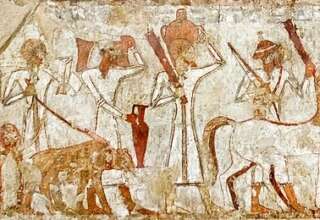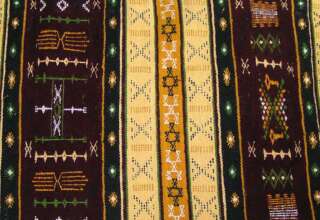
Nonetheless, Nv Shu is influencing the tradition itself. San Zhao Shu is the ‘third day missive’ of good wishes presented by a bride’s friends, this has become the very important tradition on the third day of a newly married couple. Not only did San Zhao Shu was formed by needle work in Nv Shu, the folk songs, riddles and poems are also conveyed in Nv Shu. The picture below shows the form of Nv Shu comparing to Ancient Chinese letter ‘Female’ (on the left is Oracle bone script, on the right is Nv Shu). One can see that the female is not kneeling nor have the hands been tied in Nv Shu. It appears more like the women are standing up and dancing.
Using three hundred and seventy-nine letters, Nv Shu described marriage, family, social interactions, anecdotes, songs and riddles. Nv Shu could be one of the earliest forms of female individual and group therapy. When one woman writes to another woman in Nv Shu, the privacy has been well protected. Men cannot read nor understand Nv Shu. In those letters that have been preserved, women complained about life struggles, encouraging each other to pass through difficulties. It was believed that women gathered together to sew clothes and sing Nv Shu songs. They helped each other and thought about solutions as a group. With this help of Nv Shu, women they became more optimistic as they found a way of gaining support and problem solving.
Conclusions
Nv Shu inspired Chinese women in three ways. First, women have a natural strength in searching for hope when in despair. Jiang Yong women were under the traditional pressures such as foot binding. They were not allowed to walk far or choose the place to live. They settled their marriage mostly by matchmakers and never had any chance to go to school. Nv Shu was created in such circumstances in order to help women think and speak up.
Second, women have the strength of transforming and sublimation. Women are born with pain built in, both physically and psychologically. A woman carries pain all through her life, such as period pain and childbirth. When a woman’s body is seen as a container, one could notice that not just pain was contained, but also shameful and guilty feelings. Nv Shu offers an example of how women had transferred their pain into literature and thus sublimating the sorrow into art.







